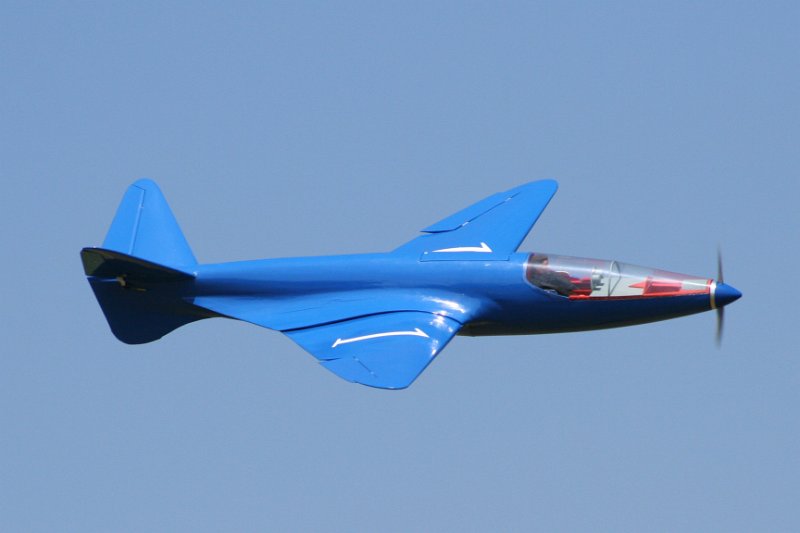
Model construction: 2005
Features of the model:
Wingspan: 1.20 m
Mass: 0.3 Kg
Engine: GWS 350 (red 6.6: 1)
Battery: 3S1P 880mAh (Lipo)
Starting the Indoor with a Patmate is not necessarily a good idea, I reduced my Piper Vagabond by about half and made it in 3mm depron. (I specify that the Patmate is a good aerobatic plane, I appreciated it outside without wind. But to make it fly in room requires skills which I did not have).
Building:
The attached plan gives the main lines of the construction and lets everyone know their habits.
We can however note that the wing is made in one piece, the leading edge is marked with an old pen every 5 mm on the first 5 cm in order to be able to curve it effortlessly to the right profile, this one given by regularly spaced ribs. The dihedral is imposed “by force” by the shrouds (1.5 mm carbon rods).
The fuselage is assembled in a very classic way: The sides are cut out and then connected by the pairs C3, C4 and C5. Next come the couples C6 and C7, taking care to keep a straight fuselage. Finish the assembly by pinching the nose with the couples C0, C1 and C2.The top of the cover is made by “rolling up” the sides on the couples. The back of the fuselage can be glued from the couple C5 to C7. Do not close the underside in order to put the radio in place.
The stabilizers are glued while taking care to respect the angle of incidence of the stabilizer to have a high tail flight pace and not to have a too large longitudinal V which would send the aircraft to the ceiling at the slightest acceleration.
The controls are made of 1.5 mm carbon rods; the engine is mounted according to its type. In the case of a GWS350, it is simply threaded onto a piece of 10×10 hardwood and wedged by the front flange.
Note: a GWS 350 is oversized for this aircraft (only the first 3 notches of gas are usable, after it is a racer plane: o)
The landing gear is made in a piano wire sandwiched between two plates of plywood 10/10 themselves glued to C3.
The wing is then glued to the fuselage and the shrouds are made of 1.5 mm carbon rods. The dihedral is obtained “by force” until 20 mm is obtained under each wings end.
Takeoff:
Just put half the throttle and voila.
In flight:
In two axes there is no alternative, we use the drift. The turn is immediate with the dihedral indicated above. Just support at depth and manage the gas. there are no bad surprises and we have time to think. The plane has potential: the towing of a glider (indoor too) has been successfully attempted as the videos attest.
Outdoors without wind (or moderate), this Piper is a real pleasure.
Landing:
Just reduce the gas and manage the touch of the ground.
The Plan: Piper Vagabond PA15 indoor.zip
If you make this model from this plan, please send me a photo.
